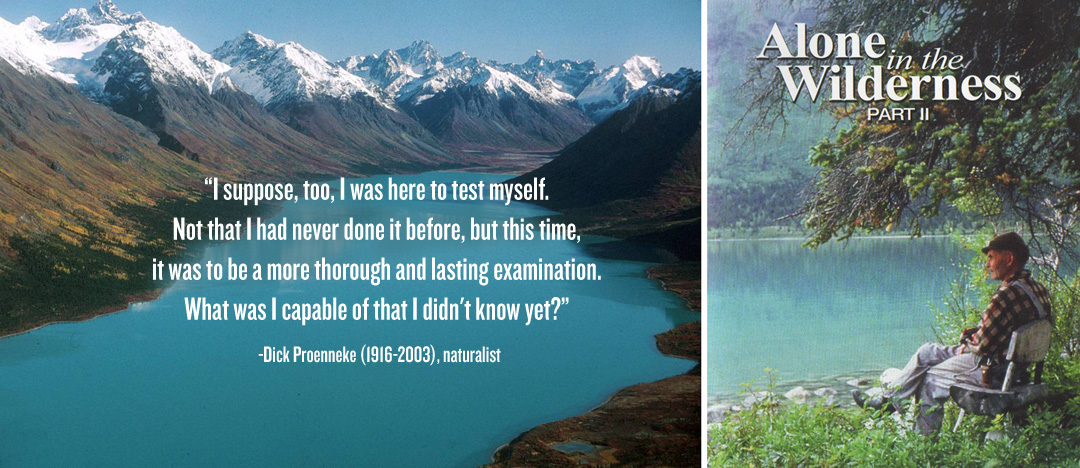This past spring I caught the beginning of a documentary on PBS called “Alone In The Wilderness”. The film follows the life of Dick Proenneke (1916-2003) who, at the age of 51, moved to Alaska and lived a life of solitude that would be comparable to what the pioneers of North America lived hundreds of years ago. He stayed there for 30 years. I was paralyzed as my eyes were glued to this man’s story and I watched it straight to the end, as well as a couple more times over the following months.
Dick Proenneke retired from his diesel machanic career in 1967. He spent that summer exploring the Twin Lakes region looking for the ideal site to build a cabin and cutting logs that he would use the next year. He returned to Twin Lakes on May 21, 1968 and began turning the raw logs into his cabin. He stayed in Spike’s cabin during the construction. Dick built his cabin using only hand tools, no backhoes, no chainsaws, no electric drill, just hand powered tools. He even made many of his tools himself. The cabin measured 11′ by 14′. It had a gravel floor, windows, a dutch door, a fireplace, and a moss covered waterproof roof. He had to build all his own furniture too, chairs, tables, desk and his bunk. He also built a cache to store his food out of the reach of the animals.
In 1973, Sam Keith wrote the book One Man’s Wilderness: An Alaskan Odyssey, based on Proenneke’s journals and photography. After years in print and a re-edition, Keith’s book won the 1999 National Outdoor Book Award. In 2005, some of Proenneke’s film, Alone in the Wilderness, began appearing on PBS. Primarily, the film consists of shots of Proenneke performing tasks around his cabin, canoeing and walking, and views of wildlife, along with narration. For shots of himself (since he was alone), Proenneke fixed the camera in place, and then performed his tasks. This would necessitate him returning to the camera after walking or canoeing away. An unknown visitor recorded some shots of him in the movie. He or she is not seen, but his or her existence is given away in several scenes when the camera follows him as he is walking or canoeing. Also in 2005, the National Park Service and the Alaska Natural History Association published More Readings From One Man’s Wilderness, another volume of Proenneke’s journal entries. The book, edited by longtime Lake Clark National Park employee and Proenneke’s friend John Branson, covers the years when the Park was established. Dick also had a very close relationship with the Park Service; assisting them video taping sensitive areas and notifying them if poachers were in the area. The actual location on the Upper Twin Lake is at coordinates  60°38′59″N 153°48′38″W.
60°38′59″N 153°48′38″W.
Watch a short clip from this incredible documentary below, and learn more about the film here.


